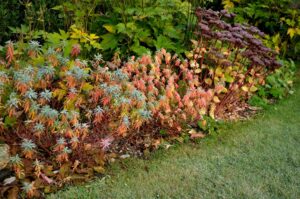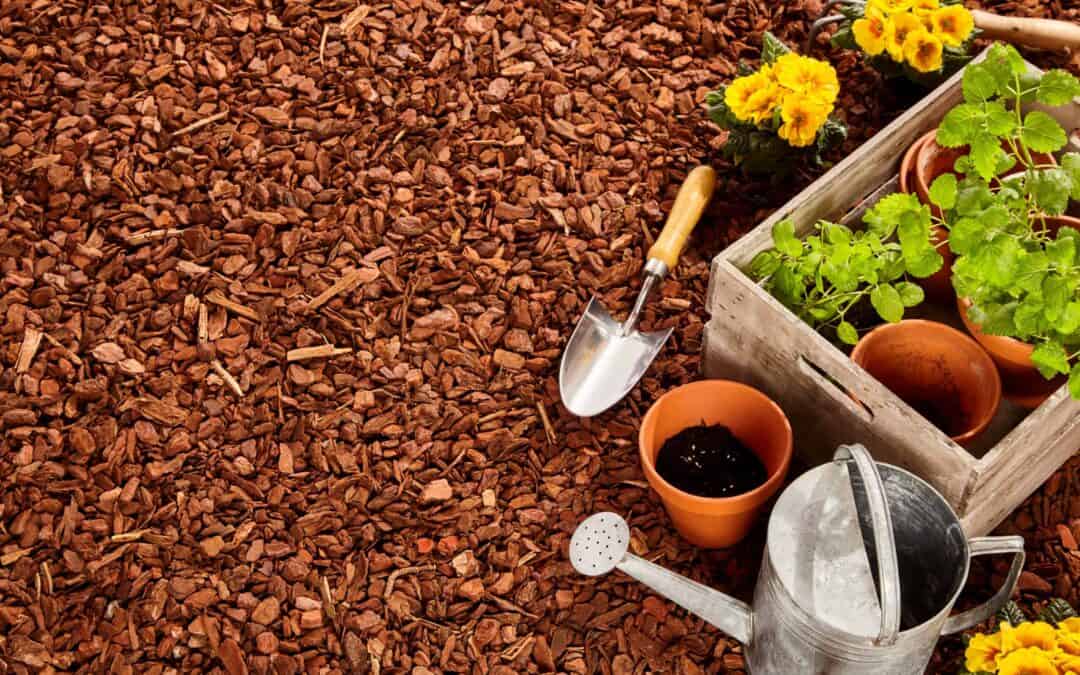Of course, with gardening, you could argue that there is a consequence to making our beds. After you make your garden bed, you have a garden bed clean up a few months later.
But, for all the beauty and joy our garden beds give us, cleanup is undoubtedly a price we’re willing to pay, particularly when you have professional landscapers like Divine on speed dial* to do it for you.
*Note to Young Readers
Speed dial is a function that used to be available on home phones** that allowed you to make a phone call*** quickly to a person you frequently contact by pressing the “speed dial” button and then a number.
**Home phones were like cell phones, but you had to keep them in your home, plugged into a wall. The benefit of this was people couldn’t always reach you.
*** Phone Calls are what people did before texting was available. It involved using one’s voice to communicate, which was sometimes inconvenient but avoided typos.
What Is Involved In Garden Bed Cleanup?
Garden Bed cleanup involves several tasks that all improve your garden. Some of you might know what to do just by looking, and others include learning a little more about the plants’ life cycles.
Debris Collection
Your plants shed debris all year. It results from weather, wear and tear, animals, and the normal growth cycle. But in the fall, your plants undergo one of their most dramatic transformations and the one that sheds the most debris.
Plant shedding includes leaves, branches, petals, and more. All of this debris lands on the ground surrounding the plants. While it will eventually break down, the time frame is too long to keep your garden looking good and healthy.
Removing Dead Plants
You probably planted some annuals in the spring or summer. Annuals are vivid and colorful, but their life cycles are short. As a result, once fall rolls around, they’re no longer a lovely sight.
We remove dead flowers and other plants from your garden beds in the fall.
Pruning & Cutting Back
Of course, many plants can survive for many years, blooming seasonally. Hopefully, you have some fall-blooming perennials that add color this time of year. But you also likely have some perennials bloom in the warmer months and go dormant in the fall.
For fall-blooming perennials, we prune the unhealthy parts and the spent blossoms. For dormant flowers, we will also prune and, depending on the plant, might cut them down to just above the ground line. This allows the plants to use all their energy this winter on the roots.
Why Cleanup Garden Beds?
Garden bed cleanup is a vital fall cleanup task. It’s not as ubiquitous as leaf cleanup, but it’s just as important. Here’s why.
Look Better
Your garden beds are the stars of your landscape show. Therefore, garden bed cleanup is necessary to keep them neat and attractive even if nothing is in bloom.
Keeps Them Healthier
Plants’ debris builds up over time. A layer of it can block plants from getting what they need, like water and sunlight. It can also trap moisture which leads to plant diseases and mold.
In winter, water trapped beneath leaves and other plant parts can freeze and become ice. That can kill plants.
Makes Room
Finally, plenty of plants grow and bloom colorfully during the fall. When you remove dead plants, you can replace them with living ones!
If you don’t want to add plants during the colder months, or your garden is primarily dormant perennials, you can use the room you create by removing dead plants to add seasonal decorations or stones. Then, you can leave it bare but neat and let your mulch or shrubs shine.
Lying In It
Your gardens contain various flowers, shrubs, grasses, and other elements. Each has its own needs this fall and winter. You may need to gain the knowledge base to know the right actions to take for each one.
Luckily we’re here to clean up your garden beds for you, add fall flowers, and take care of all your cold-season landscaping needs. Because a well-maintained flower bed isn’t just beautiful; it’s Divine.
 (316) 435-3509
(316) 435-3509 office@divine-lawns.com
office@divine-lawns.com
